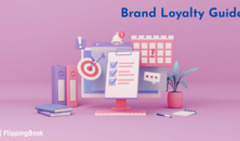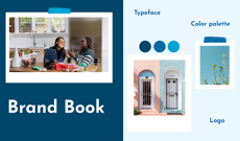In today’s crowded marketplace, customers choose the brands they recognize and trust. Building that recognition comes down to strong brand identity and consistent brand awareness. To maintain both, you need clear brand guidelines that ensure your brand looks and feels the same across every channel.
In this article, we’ll learn how to create effective brand guidelines, explore how AI tools can simplify the process, and look at creative brand guidelines examples from world-renowned brands.
What Are Brand Guidelines?
Brand guidelines, also known as a brand book or style guide, are a set of rules that outline how your brand should appear and sound across all platforms. They cover everything that the brand includes: logo usage, its size and placement, color palettes, typography, imagery, and even tone of voice. With these rules in place, your brand stays consistent at every touchpoint.
Why Do You Need Brand Guidelines?
Picture this: one employee launches a campaign using the wrong version of your logo, while another misspells your brand name. Money is spent, but the results fall flat because customers don’t recognize you. Guidelines exist to prevent this, providing employees, partners, and agencies with the exact tools they need to accurately represent your brand. Brand guidelines help you to:
📢Strengthen recognition. Consistent use of logos, colors, and brand voice makes your business instantly recognizable and more professional in the eyes of your audience.
Brand consistency is a competitive advantage
Brand consistency can increase revenue by 10-20%. And over 60% of brands believe maintaining a strong, consistent brand is important when generating leads and communicating with existing customers.
💻Improve workflows. With the right documents at hand, your team doesn’t waste time searching for files or risk making design and typography mistakes.
🤝Simplify collaborations. When you have a ready-made brand book, sharing your identity with partners becomes easier: no lengthy approvals or repeated questions about your brand values.
How to Create Brand Guidelines
Creating effective brand guidelines begins with defining the key components of your brand and consolidating them into a clear, comprehensive document. So, what to include in brand guidelines? Typically, it covers brand values, logo usage, color palette, typography, graphic elements, and practical instructions on how to apply these elements across different platforms (e.g., social media, print, merchandise). With this in place, your team, partners, and agencies will always have the tools to create and distribute branded content correctly. To help you get started, let’s break down the process of creating brand guidelines step by step.
🎯 Establish your brand values
Every brand is built on a mission and core principles. Define what your brand stands for—your ethical standards, tone of voice, and unique personality traits (for example, whether your communication uses humor or a formal tone). These values help ensure your brand messaging stays authentic and improves brand recognition.
🤖You can use an AI writing assistant, like ChatGPT, to:
- Write mission drafts and test how they sound in different tones of voice.
- Create your brand personality (e.g., playful, formal, bold).
- Test how your brand voice resonates with different audiences.
Personal values drive brand preference
Across all 25 countries surveyed, an average of 70% of respondents say they buy from brands they believe reflect their own principles.
💡 Define logo usage rules
Showcase how your logo should be used across different contexts. Include size specifications, color variations, placement rules, and file formats for print, digital, and merchandise. It’s equally important to outline improper uses (e.g., distorted proportions, incorrect colors) to avoid inconsistencies.
🤖Try some of the AI design tools, such as MidJourney or DALL-E, to:
- Generate logo ideas based on keywords and brand style.
- Create variations for different use cases.
- Provide some incorrect usage examples.
🎨 Pick a brand color palette
Colors are key to brand recognition. List your primary and secondary colors with exact codes (RGB, CMYK, HEX, Pantone) and explain their usage across digital and print. You can also highlight accent colors and provide visual examples of how to combine them effectively.
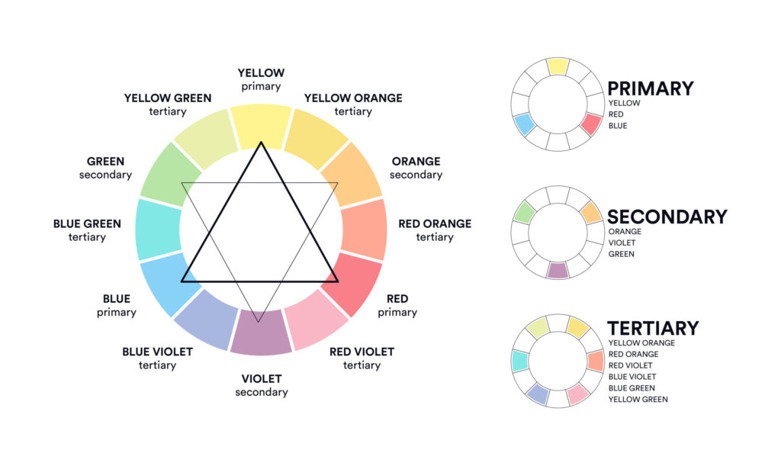
Source: Looka
🤖To simplify the process, implement AI palette generators, like Khroma or Colormind, to:
- Generate color palettes.
- Test combinations for accessibility and readability.
- Suggest optimized codes for print and digital.
🖍️ Choose brand fonts
Fonts are another crucial element that reflects your brand identity. Specify the typefaces your brand uses, along with hierarchy rules (headings, subheadings, body text), alignment, spacing, and sizing. This ensures all will look cohesive.
🤖If you need help with that, you can use an AI font tool like Fontjoy to:
- Find font pairings that work well together.
- Preview fonts in different sizes and contexts.
- Check readability across platforms.
🖼️ Select graphics and imagery
Whether created by your in-house team or external partners, visuals should reflect a unified style and represent your brand. Provide examples of approved image styles, illustrations, icons, and other graphic elements. You can also include “dos and don’ts” to show which types of visuals fit your brand and which should be avoided.
🤖Generative AI visuals like MidJourney and Canva Magic Media can help you:
- Create illustrations, icons, or patterns in a unified style.
- Generate branded imagery for campaigns or social posts.
- Provide clear “dos and don’ts” examples for your style guide.
📨 Compile and share brand guidelines
Once all elements are defined, compile them into a well-structured, detailed document, like a brand book. You can design it in-house or use ready-made brand guideline templates available in tools like Canva and other platforms. Then, decide how you will share it with employees, agencies, and partners.
Printed brand books are rare today: they’re costly, difficult to update, and not very eco-friendly. Instead, most companies publish their guidelines digitally, typically in one of these formats: a PDF, a dedicated webpage, or an interactive flipbook.
While a PDF is a common choice, it can be hard to update and distribute. A more effective solution is to convert your guidelines into a digital interactive flipbook. This format not only makes your brand book easy to share but also adds valuable functionality.
✔️ Share and update effortlessly. Send it as a simple link via email or messenger. If you need to make changes, just update the flipbook, and the shared link updates automatically.
✔️Maintain brand consistency. Customize the flipbook with your logo, color palette, and custom background. You can also add links to your website or integrate clear call-to-action buttons.
✔️Provide an interactive reading experience. Enrich your flipbook with embedded images, videos, and GIFs that visualize your brand story.
✔️Customize your brand book link. Personalize your flipbook link with your title and custom domain to build trust and strengthen recognition.
✔️ Gain valuable insights. Use built-in analytics to show you who views your brand book, how often, from which countries, and more.
Check the example of the digital brand book below:
8 Brand Guidelines Examples
To better understand how it works in practice, let’s look at some creative brand guidelines examples from well-known companies. They show different approaches to structure, tone, and visual presentation, and can serve as inspiration when creating your own. You’ll notice that while the core elements remain similar, each brand adds its unique personality and priorities.
#1 Ben&Jerry's Brand Guidelines
Ben&Jerry’s is an American company known for its ice cream. Their brand guidelines reflect the brand’s playful personality: they are colorful, humorous, and include all the key components a strong brand guide should have.
#2 Slack Brand Guidelines
Slack is a cloud-based team communication platform used by millions of companies worldwide. In contrast to Ben & Jerry’s playful tone, Slack takes a more serious and professional approach. Still, their guidelines are well-structured, visually clear, and effectively guide users through the brand’s visual and verbal identity.
#3 Eyewear Brand Book
Eyewear is a brand created by David Beckham, offering a range of sunglasses and optical frames inspired by his signature style and global travels, and designed in Italy. The brand book provides all the essential information about the brand: its mission, strategy, and even point-of-purchase materials. It looks classy, stylish, and luxurious—exactly what you’d expect from a brand like this.
Eyewear by David Beckham Brand Book
The Association of Professional Engineers and Geoscientists of Alberta (APEGA) is the largest regulator of self-regulated professionals in Western Canada. Their comprehensive brand guidelines cover every aspect of their visual and verbal identity—from brand foundations, colors, and typography to photography, brand voice, and even annual reports. The guidelines look highly professional and polished, combining a strong business style with an engaging, modern design.
Vermissen is a Dutch interior design company operating worldwide. They design, develop, and supply furniture, lighting, and accessories. Their brand book stands out with its stunning visuals that showcase their products in the best possible way. Unlike many others, it focuses less on corporate details and more on presenting the collection and real-life examples of use, helping viewers truly understand the brand’s aesthetic and vision.
#6 Spotify Brand Guidelines
Spotify, the well-known music streaming service, offers comprehensive brand guidelines on its website. They cover proper usage of the logo, fonts, colors, and other brand elements, ensuring consistent representation across platforms.
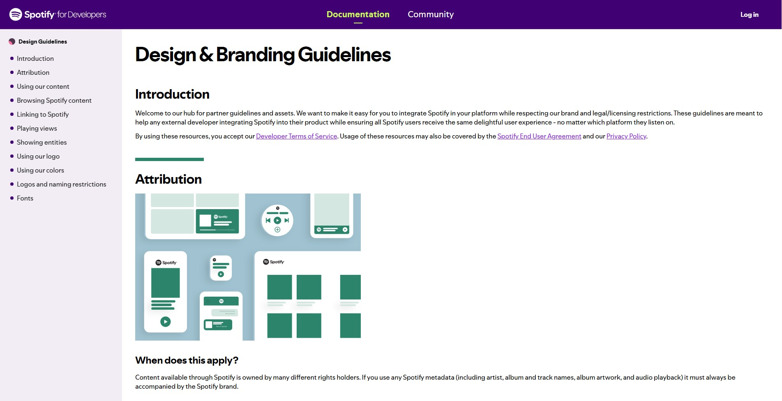
Source: Spotify
#7 Medium Brand Guidelines
Medium, one of the largest online publishing platforms, provides concise guidelines that focus on the essentials, such as logo and icon usage. They also make it easy to access brand assets by including a direct link to download icons.
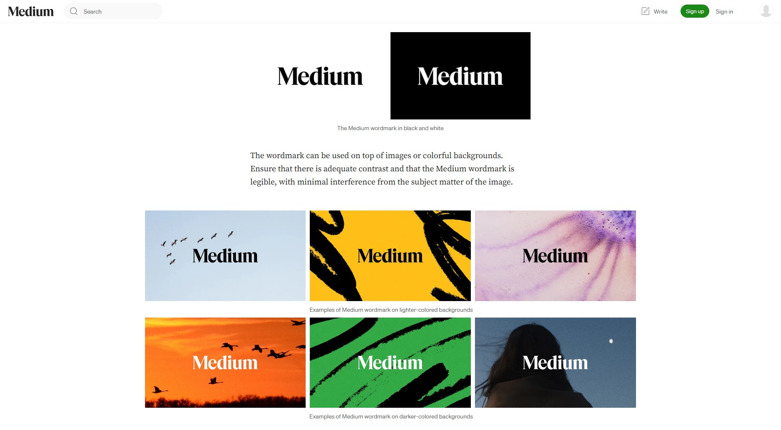
Source: Medium
#8 Netflix Brand Guidelines
Netflix, the American streaming service for movies and TV shows, provides a webpage detailing proper logo usage in the brand’s colors. The page focuses on different logo variations, color applications, and readability. It also includes a section highlighting incorrect logo usage, accompanied by visual examples, to prevent misrepresentation.
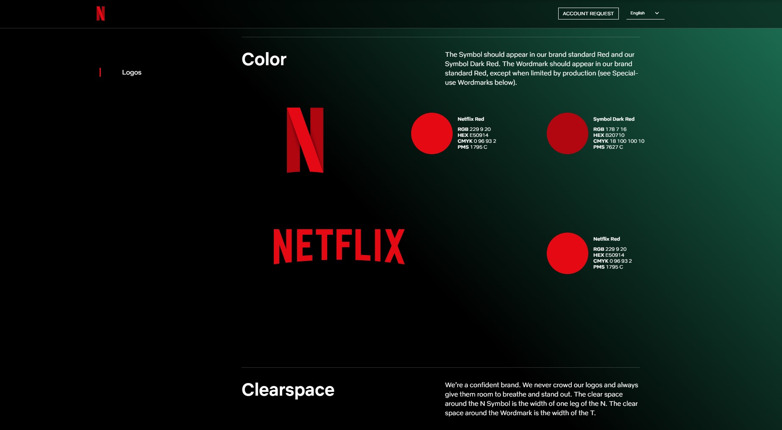
Source: Netflix
Keep Your Brand Consistent with the Brand Guidelines
Having brand guidelines is essential for any company. They ensure brand consistency, improve recognition and awareness, and help prevent misinterpretation of your brand values or incorrect logo usage. While the brand guidelines document is important, it doesn’t have to be overly serious or rigid. The design and tone of your guidelines should reflect your company’s unique style and personality. They can be engaging, creative, and even playful, while remaining effective.

